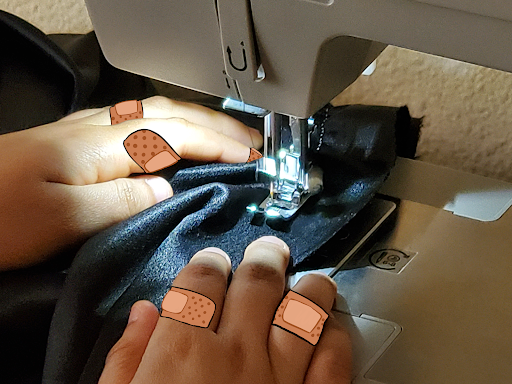
By Kristen Shepard
Staff Writer
It is not an unusual sight. When the results of a tryout or audition are posted on the door of a gym or auditorium, students are divided in emotion. Some rejoice, offer hugs and shriek while others slip away in tears.
On a campus as large as Coppell High School, or any school for that matter, there aren’t always enough spots to accommodate every student who tries out for a position. There can only be one lead role in the play and only six starting varsity volleyball players. Not everyone can make everything they try out for.
And thus, a problem is created. What is the best way for a coach or teacher to break the bad news to students? Is there a best way?
It is no secret that coaches are busy people. Being respectful and encouraging to players who were not lucky enough to secure a spot may not be very high on their priority list. That is the problem.
When a student tries out for something, they should be guaranteed two things: a fair and full evaluation of their ability and the right to not be humiliated if there isn’t a position for them.
Some of the methods coaches and sponsors use to break the bad news are downright hurtful and embarrassing.
I will never forget a club volleyball tryout I attended during my eighth grade year. Thirteen years old, I was shaky and nervous. I knew that this club was one of the more prestigious in the area, and I was willing to fight for a spot.
At the end of the tryout, the coaches sat the group of sweaty girls down on the gym floor and called each person who made the team, name by name. After the 24 girls who were offered a spot walked in front of the group to get their envelopes, the rest of us sat and watched as the girls celebrated.
I understand that the “sit-the-group-down-method” proves quick and straightforward, but no one without a congratulatory envelope deserved that kind of embarrassment. We watched our friends and schoolmates celebrate, waiting with anticipation for an envelope that never came.
In a school like Coppell with many organizations, tryouts and applications are ongoing throughout the school year. Any involved student has become accustomed to the different ways results are delivered to them.
Many coaches post lists of selected players on gym doors, or with a 21st Century twist, on their team website. While I have found this method to be most common for sports and theatre activities, it often leaves players hanging. Oftentimes, rejected students walk away from the lists with lingering questions. Why didn’t I make the cut? What can I do better next year? This method lacks closure.
But sometimes students don’t want closure. If they make it, they make it. If there isn’t a spot for them, they do not want to drag out the rejection.
On the contrary, some sponsors lean towards a more personal approach. Generally, this involves a face-to-face confrontation or e-mail, an explanation or justification and the cliché “Thanks for your interest.” This shows the students that they were appropriately considered, but also causes the student to feel supremely uncomfortable. Sometimes, all the student wants is a “yes” or “no.”
While many coaches have become creative with their methods, I have yet to discover a method that works universally. Coaches need to consider the nature of their activity and use the most respectful method to let their students know the results.
There is no easy way to let a student know they will not be admitted, cast or recruited. However, coaches should be discreet, honest and cordial about the way they break the negative news.
In many Coppell sports programs, including volleyball and soccer, coaches will approach those who do not have the skill set to play on the team as soon as they realize this. Tryouts are excruciating, and the coaches should not put players through the strenuous conditioning if they know they are not interested.
Too often, coaches seem to forget how hurtful rejection can be. Anyone who has been cut from a team or not been accepted into a club can sympathize with the embarrassment and shame.
If coaches can make rejection easier for students, ideally, they will not let fear stop them from trying new things. When “I don’t know if I have what it takes” becomes the mentality, so many opportunities are missed.
Rejection happens, but it does not have to be made any more embarrassing or demeaning than it already is.















